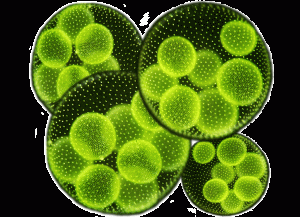Select item to view

Karl Imhoff was the driving force in the development and invention of the technical apparatuses and methods of sewage treatment (the trickling – and activated sludge process). Imhoff provided not only significant technical innovations, but also design rules derived from experience in the operation of sewage treatment plants. He wrote a book Handbook of Urban Drainage in 1906, which today is released in new editions. In its 100-year history, the book has been translated 40 times. It has appeared in a total of 20 languages.
municipal residential wastewater contains a myriad of resources, which we can recover using bionomic processing technology and methodologies.
Las aguas negras que se producen en comunidades contienen varios recursos que se pueden recuperar por medio de technologías y procesos que nosotros denominamos bionómicos.
Nuestro procesamiento bionómico de aguas negras permite recuperar los recursos contenido en las aguas y producir materias primas de valor económico incluyendo energía y combustibles renovables sostenibles
 Naturfolgende kommunale Abwasser Verarbeitung: „Algen zu Tisch beim Phosphorschmaus“
Naturfolgende kommunale Abwasser Verarbeitung: „Algen zu Tisch beim Phosphorschmaus“
Ist ein in Vortrag der basierend auf unserer Verfahrenstechnik der bionomen Abwasserverarbeitung auf den Magdeburgern Wassertagen am 18. & 19. September 2014 vorgestellt wurde.
Basierend auf unserer bionomen Verfahrenstechnik wurde vorgestellt wie man nicht nurPhosphorfällung auf naturfolgene biologische Basis erzielen kann sondern auch eine generelle natürliche Reduktion von allen gelösten Nährstoffen. Ohne Eisen-II-sulfat oder Alum.
Main topic of the presentation was the use of microalgae as part of our bionomic wastewater processing system to achieve reductions in not only dissolved phosphor content, but also a general reduction and rehabilitation of the effluent, complete elimination of BOD and enrichment with oxygen to 6mg O2 per liter. All without chemical additives such as Fe-II-sulfate nor alum.
This presentation was given in Magdeburg during the “Wassertage” in Sptember 2014 sponsored by the company Hach-Lange.
Manure has more value once processed by means of efficient anaerobic digestion than just fertilizer.
Once it has been processed by microbes known as archaea we obtain biogas with a methane content of between 55 and 65% for fuel as well as a stable fertilzer that can be fractioned into a liquid and a solid component.
This was one of the first bionomic / biogenic projects undertaken in the Dominican Republic in 2009. Agricultural organic waste processing to produce stable electricity as well as high value fertilizer in order to reduce or even eliminate industrial fertilizer purchases.
The project was registered as CDM in its day.
Unfortunately changes in political climate put the project to sleep. The technology is very much still alive and well and can be applied anywhere on any scale.
Understanding Biogenic GHG Emisssions Using Long Path Fourier Transform Spectroscopy (LPFTS)
Proceedings Workshop on Agricultural Air Quality: State of the Science June 5, 2006
Prof. T.C. Hutchinson, Nils Semmler, C.J. Ferguson.
Biogenic GHG emissions resulting from biological processes at the microbial level can be considerably complex. Long Path Fourier Transform Spectroscopy (LPFTS) is a new evolving real time air pollution monitoring technique capable of detecting multiple pollutant gas signatures by measuring the transmittance [absorption] of light across a predetermined path.
Methodologies, protocols and algorithms developed at TRENT University using LPFTS permit real time assessment of complex biogenic point source GHG as well as GHG precursor emissions.
Correlation of real time observational field data obtained to known biological processes allow us to achieve a better understanding of underlying microbiology and biochemistry as well as potential “natural” mitigation strategies such as anaerobic digestion of organic [biogenic] residuals.
Long Path Fourier Transform Spectroscopy (LPFTS) for Qualitative Approach to Development of Quantitative Knowledge Regarding Anthropogenic GHG Emissions
AGU Science Policy Conference Fall 2005 Dec 5, 2005
Prof. T.C. Hutchinson, Nils Semmler, C.J. Ferguson.
LPFTS is a new evolving air pollution measuring technique with potential application in determining source GHG and precursor emissions. When monitoring any air pollution source, it is ideal to detect every emitted constituent. LPFTS is capable of detecting multiple gas absorption signatures simultaneously by measuring light transmittance across a predetermined path. Presented in this article is a detailed description of LPFTS methodology as well as protocols developed for simultaneous detailed field data acquisition of multiple gases to permit gaining insights into qualitative and quantitative emission differences and relationships between land applied raw manure versus anaerobically digested manure.